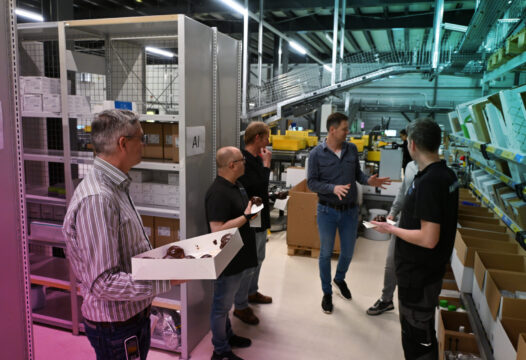As a finance professional, it’s easy to lose time on relatively simple but repetitive activities. It’s not the kind of work you spent years studying for. Nor is it the kind of work that you enjoy. And it’s certainly not the kind of work that makes the most of your expertise. Thankfully, there’s a smart way of handling these activities so that you have time to do the real work (if your organisation works with SAP and Winshuttle).
In my business, I frequently see companies invest in software that they don’t make full use of. Winshuttle’s software is a good example. It’s often used to safeguard the quality of master data. But the same software can also be of use to the finance department.In this blog, I’d like to give you some practical examples that I have encountered in my role as a finance and control consultant. They are examples that demonstrate how you can use Winshuttle to accelerate processes and improve quality. They are also examples that demonstrate how you can free yourself up, as a finance professional, so that you have more time to deliver real added value. These examples will also be discussed in the webinar that we have given on this topic on 14 May.
Winshuttle?
Let’s rewind a little first. What is Winshuttle? Let me explain. Manually processing large quantities of data or carrying out transactions in SAP is difficult and time-consuming. Excel is a much faster way. It’s just that Excel and SAP had a poor relationship for many years. Exporting data from SAP to Excel and importing data from Excel into SAP were as good as impossible. But Winshuttle ushered in change, making it possible to export data from SAP to Excel, process it with the aid of Winshuttle, enhance it and upload it back to SAP. Winshuttle can also provide matching workflows so that activities can be carried out when they are authorised.
If you just need to edit a few fields in SAP every now and then, you don’t need Winshuttle. But, if you need to process large quantities of data, a tool like Winshuttle is an absolute must. NS Stations, for example, uses Winshuttle to keep the prices of more than 12,000 items up to date. Lamb Weston and BrandLoyalty use the software to accelerate the input and control of master data, and to improve its quality.
This is how you free yourself up with Winshuttle
Many different departments work with SAP, not just data specialists. The employees in these departments can also benefit from Winshuttle. The finance department is perhaps the best example. Let me outline three scenarios.
Scenario 1: quickly activating assets
SAP offers a range of options for activating assets. One of the options is to transfer the initial incoming invoice for the asset to a specific balance sheet account. The master data for the asset is created later, and then activated against the balance sheet account. At a company with a large network of branches, we have used Winshuttle to quickly create and activate a large number of assets. This was needed because every branch had a large monthly asset purchase volume. Processing these assets manually would have taken so long that the month-end process would have experienced delays.
Scenario 2: submitting and paying claims
Winshuttle can also be set up to handle the submission and processing of claims. Processing claims can be time-consuming. After all, the person who submits the claim does not know which general ledger accounts are associated with the expenses being claimed. That investigation work can be easily overcome with a simple form on an intranet. The employee enters their details and indicates the category that applies to the expenses. The categories are linked to the correct general ledger accounts behind the scenes. The claim is then submitted to the right party for approval using an automatic workflow. If the party approves the claim, it is posted automatically. If necessary, the employee can be automatically created as a creditor.
Scenario 3: automatically streamline reconciliation
Reconciliation is the process of matching open items with one another. In SAP, you can reconcile automatically by running a program which can cover open items for debtors, creditors and general ledger accounts. The fields for which automatic reconciliation takes place can be configured on an account-by-account basis, but the ‘allocation’ field is generally the one that it is used. If the posting processes have been properly configured, most reconciliation will be automatic, but in some cases, open items will remain after automatic reconciliation as the allocation field has not been populated, or is incorrect. There are then two options: manual reconciliation or modifying the allocation field in the posting and running automatic reconciliation again. Both options are time-consuming. Winshuttle can help to accelerate this process. Using Winshuttle, reporting of open items in Excel, enhancing the allocation field in Excel and changing the allocation can all be carried out with great ease.










